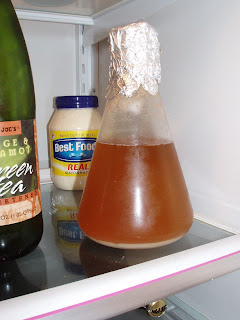So last night SWMBO and I decided that I should brew 10 gallons of Belgian Wheat today. I had everything on hand. I only had one package of liquid yeast, though, so I made a starter. Boiled 2 quarts of water, 2 cups of LDME, chilled in an ice bath, pitched smack pack (I smacked it about an hour before), covered loosely with foil. Everything in contact with wort was sterilized with star san.
I haven't made a starter in a looooooong time, but I expected to see some activity 7 hours later. Everything's quiet in there, though. Just a substantial yeast slurry on the bottom of the container. Is it possible I missed it in just 7-8 hours? Didn't appear to be krausen on top.
I'm hoping to brew later today so I'm wondering if I need to go buy some new yeast.
I'm probably jumping the gun on all this, but I don't want to screw up my first ten gallon batch of beer.
Thanks for the advice.
I haven't made a starter in a looooooong time, but I expected to see some activity 7 hours later. Everything's quiet in there, though. Just a substantial yeast slurry on the bottom of the container. Is it possible I missed it in just 7-8 hours? Didn't appear to be krausen on top.
I'm hoping to brew later today so I'm wondering if I need to go buy some new yeast.
I'm probably jumping the gun on all this, but I don't want to screw up my first ten gallon batch of beer.
Thanks for the advice.



